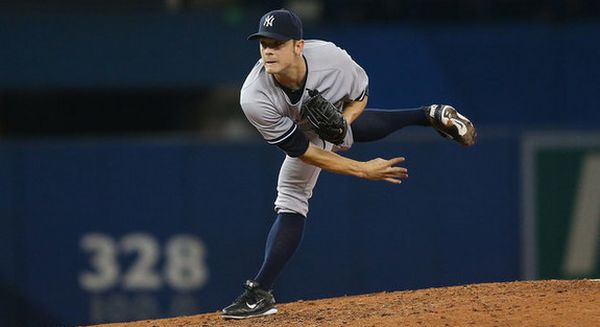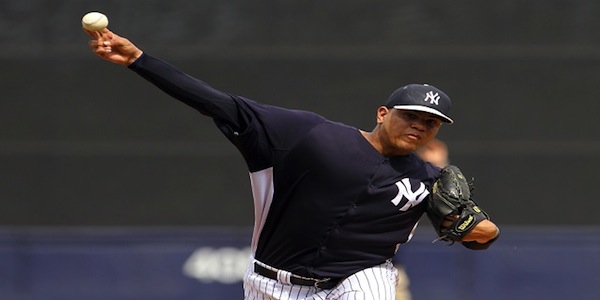2014 Fantasy Baseball: Total Run Index – ADP vs. TRI Relievers 1-20

There gets to be a point where total run index becomes more or less ineffective. That point hits squarely when we are talking about relief pitchers. Relief pitchers offer one or two categories (depending on your league) in spades and these categories have little to do directly with TRI. So, when I look at players that underdrafted or overdrafted we look at their particular situations more than their TRI score. This is foreign to me as TRI was initially meant as a way to determine who should be getting those opportunities. Yet, when talking about closers we often have to throw these results aside.
What makes a closer is too often external to the closer. It is about how many closing opportunities they will get and whether their manager will trust them completely with the role. In past articles, I’ve said I hated closers. As the kids say, I don’t hate the player, I hate the game. With Mariano Rivera’s retirement, only one closer in the game has been a closer for more than five consecutive seasons. Jonathan Papelbon is the only one. Sure, there have been some guys with more than five years experience, but they have had periods within the last five years where they have either lost that job or been injured.
So, there’s performance and then there are circumstances. The greatest fantasy comparison to the closer is the kicker in football. They score a lot of points and that is valuable, but the ablity of the kicker is secondary to the opportunities he gets. This is where we evaluate closers. Funny, I got more comments on articiles about relief pitching than any other because the analysis of the role they will likely be in is so important. With position players or starting pitchers we pretty much know who is going to play and who isn’t. Relief pitchers will all play, but when they play is the most important thing.
|
POS |
ADP |
Index |
|
| Craig Kimbrel |
1 |
41.26 |
+17.5 |
| Aroldis Chapman |
2 |
61.34 |
+9.6 |
| Kenley Jansen |
3 |
65.45 |
+10.5 |
| Greg Holland |
4 |
67.68 |
+15.7 |
| Trevor Rosenthal |
5 |
83.72 |
+6.0 |
| Koji Uehara |
6 |
89.89 |
+10.8 |
| Joe Nathan |
7 |
94.09 |
+10.9 |
| Glen Perkins |
8 |
114.79 |
+9.5 |
| Sergio Romo |
9 |
121.75 |
+5.9 |
| Jim Johnson |
10 |
135.70 |
+4.4 |
| David Robertson |
11 |
137.51 |
+10.1 |
| Addison Reed |
12 |
138.15 |
+1.7 |
| Rafael Soriano |
13 |
139.43 |
+6.3 |
| Ernesto Frieri |
14 |
142.60 |
+3.6 |
| Casey Janssen |
15 |
144.21 |
+4.1 |
| Jonathan Papelbon |
16 |
144.77 |
+10.2 |
| Jason Grilli |
17 |
146.42 |
+4.7 |
| Steve Cishek |
18 |
147.26 |
+5.5 |
| Sonny Gray |
19 |
155.57 |
+8.5 |
| Huston Street |
20 |
168.28 |
+1.7 |
TRI Underdrafted Players
David Robertson— New York Yankees
Again, we are talking opportunities. Robertson has the impossible job of taking Mariano Rivera’s place. At the very least, he has apprenticed for the last few years in a setup role. Even if he has a down season he seems destined to get at least 40 saves because Rivera routinely had 50 or more save opportunities. In terms of TRI, we have eight players with ten or more runs a season and he is one of those guys. Yet, he has been taken on average outside of the top ten in terms of closers.
This is where we have to be somewhat philosophical in nature. He is being underdrafted in terms of closers. In twelve team leagues, he is being taken in the 12th round on average. There is a school of thought that you should wait to take your closers. When you look at the history of teams replacing closers midseason, that seems like a decent bet. Of course, adding a proven closer you can count on is also a good idea.
Jason Grilli— Pittsburgh Pirates
Grilli is proof that closers come in all shapes and sizes. A scant few years ago he was on the verge of being out of the game and all of the sudden he was able to take over when Joel Hanrahan left. Hanrahan is now the guy on the verge of being out of the game and Grilli could be the next guy to save 40 games in Pittsburgh. Pirates closers used to be a bad bet in the past, but the Pirates returned to the postseason last year for the first time since Barry Bonds had a normal hat size.
Last season, he missed some time and Mark Melancon took over as the closer. That is making some players nervous, but he should return as the closer and assuming he is healthy, he should be another guy that surpasses 40 saves rather easily. In spite of this fact, he was selected 17th among closers. He looks like a guy that should be taken in the top ten among closers. Of course, this is just guessing that the Pirates will be a good team again, but I don’t see any reason why that wouldn’t be the case.
TRI Overdrafted Players
Trevor Rosenthal— St. Louis Cardinals
This is more of a comment on the Cardinals than on Rosenthal. Rosenthal certainly looks like a dominant relief pitcher, but we’ve seen this before. They’ve been confident about their closer nearly every year and every year they’ve changed closers at some point in the season. This tells us a couple of things about relief pitching in general and about the Cardinals specifically. It tells us the shelf life for closers is not very long. That will be the ultimate reason why very few will ever make it to the Hall of Fame after Rivera finally gets inducted.
The Cardinals have a quicker trigger finger than most. If they feel they have a guy in their pen that can do it better they will make the move as they did when they switched from Edward Mujica to Rosenthal late last season. So, ask yourself how confident you are in any Cardinals closer. Sure, he will get a lot of opportunities and if he does well he will be a great pick, but the Cardinals are not shy about making changes if they feel they need to.
Jim Johnson— Oakland Athletics
There really is a fine line between genius and insanity. Billy Beane has been painted as a genius for years, but the move to add Johnson to his pen for ten million in salary seems insane. TRI may not be completely relevant for relief pitchers, but it does give us some clue as to who might be replaced. Simply put, the Athletics likely would have been better spending that money elsewhere and using Sonny Gray as their closer. When you see a huge TRI discrepancy between the closer and setup man (or even a middle reliever) it is a sign that the closer may be losing his job at some point in the season.
As for Johnson, he managed to save more than 40 games a year ago, but there were signs of decay and that was probably why the Orioles dumped him for Jemile Weeks. Weeks likely won’t play in Baltimore, but they saved about ten million dollars in the transaction. Johnson has the look of a hamburger about to drop his tomatoes. It happens to the best of closers. Some have a shelf life of a few seasons while a precious few will last five or six seasons in the same place. I would bet on Johnson losing his closing job at some point next season.






